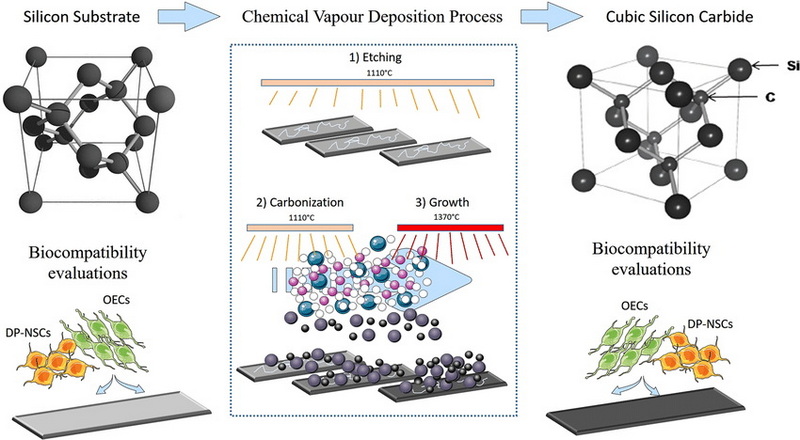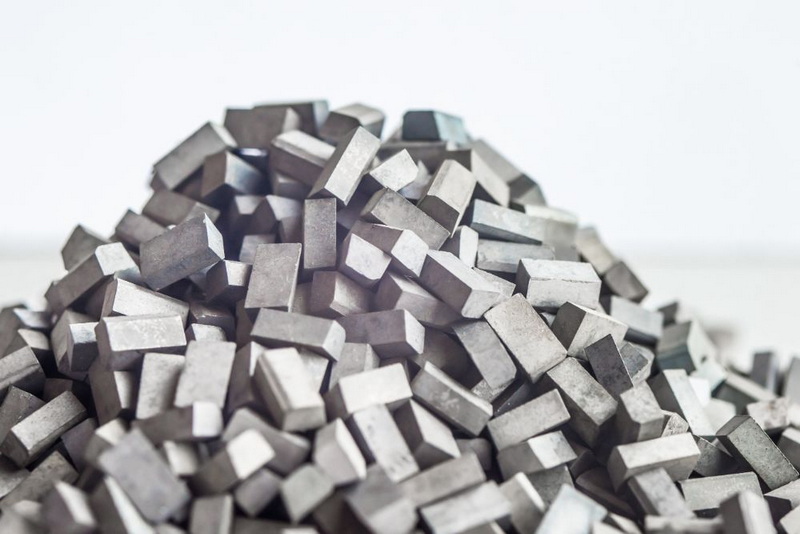Content Menu
● Introduction to Silicon Carbide
● Overview of Silicon Carbide Production Techniques
● The Acheson Process
>> Principle and Historical Context
>> Process Steps
>> Advantages and Limitations
>> Typical Products
● The Lely Process (Physical Vapor Transport)
>> Principle
>> Process Steps
>> Advantages and Limitations
>> Typical Products
● Chemical Vapor Deposition (CVD)
>> Principle
>> Process Steps
>> Advantages and Limitations
>> Typical Products
● Reaction-Bonded Silicon Carbide (RB-SiC)
>> Principle
>> Process Steps
>> Advantages and Limitations
>> Typical Products
● Other Emerging and Specialized Methods
>> Carbothermal Reduction in Fluidized Beds or Rotating Reactors
>> Direct Reaction of Silicon and Carbon
>> Use of Recycled Silicon Waste
● Post-Processing and Shaping of Silicon Carbide
● Applications of Silicon Carbide
● Additional Insights into Silicon Carbide Production Techniques
>> Environmental Considerations
>> Quality Control and Testing
>> Advances in Nanostructured Silicon Carbide
>> Market Trends and Future Outlook
● Conclusion
● FAQ: Silicon Carbide Production Techniques
>> 1. What is the most widely used method for producing silicon carbide?
>> 2. How are high-purity silicon carbide crystals grown for electronics?
>> 3. What is the role of Chemical Vapor Deposition (CVD) in silicon carbide production?
>> 4. Can silicon carbide be produced in complex shapes?
>> 5. Are there sustainable methods for silicon carbide production?
Silicon carbide (SiC) is a remarkable material with exceptional hardness, thermal conductivity, chemical stability, and electronic properties. These characteristics make it indispensable across industries such as metallurgy, semiconductors, abrasives, military, petroleum drilling, and construction. As demand for high-performance materials grows, understanding the most common silicon carbide production techniques becomes crucial for manufacturers, engineers, and end-users alike.
This comprehensive guide explores the primary methods used to produce silicon carbide, their underlying principles, advantages, and typical applications. We'll also examine the steps involved in transforming raw materials into finished SiC products, address environmental considerations, quality control, and emerging trends, and answer frequently asked questions at the end.

Introduction to Silicon Carbide
Silicon carbide is a compound of silicon and carbon, with the chemical formula SiC. Its unique combination of properties—extreme hardness, high melting point, chemical inertness, and superior thermal and electrical conductivities—make it a material of choice for demanding applications. SiC exists in several crystalline forms (polytypes), the most common being hexagonal (α-SiC) and cubic (β-SiC).
Overview of Silicon Carbide Production Techniques
The production of silicon carbide typically involves the high-temperature reaction of silicon and carbon sources. Over time, several methods have been developed, each optimized for specific product forms, purities, and applications. The most common silicon carbide production techniques include:
- The Acheson Process
- The Lely Process (Physical Vapor Transport)
- Chemical Vapor Deposition (CVD)
- Reaction-Bonded Silicon Carbide (RB-SiC)
- Other specialized and emerging methods
The Acheson Process
Principle and Historical Context
The Acheson process, developed by Edward Goodrich Acheson in 1891, remains the dominant industrial method for bulk silicon carbide production. It involves the carbothermal reduction of silica sand (SiO₂) with a carbon source (usually petroleum coke or anthracite coal) in an electric resistance furnace at extremely high temperatures, typically between 2000°C and 2500°C.
Process Steps
1. Raw Material Preparation
- High-purity silica sand and a carbon source are carefully selected and mixed. Additives may be included to enhance product properties.
2. Furnace Loading
- The mixture is loaded into a large graphite resistance furnace. Graphite rods serve as both heating elements and the central core.
3. Carbothermal Reduction
- Electric current passes through the graphite rods, generating intense heat. The main chemical reaction is:
SiO2+3C→SiC+2CO
- The reaction zone reaches up to 2500–3000°C, causing the formation of SiC crystals around the graphite core.
4. Cooling and Extraction
- After a 24–48 hour reaction period, the furnace is cooled. The SiC product forms a cylindrical mass around the core, surrounded by unreacted material.
5. Crushing and Sorting
- The SiC mass is extracted, crushed, and sorted by size and purity. Further purification (e.g., acid washing) may be performed to remove impurities.
Advantages and Limitations
Advantages:
- Capable of producing large quantities of SiC
- Relatively simple and cost-effective for bulk production
Limitations:
- Energy-intensive process
- Product purity and crystal size can vary with distance from the heat source
- Limited control over crystal structure and defects
Typical Products
- Abrasives
- Refractory materials
- Metallurgical additives

The Lely Process (Physical Vapor Transport)
Principle
The Lely process, also known as Physical Vapor Transport (PVT), is designed to produce high-purity, single-crystal silicon carbide boules. This method involves the sublimation of SiC powder at very high temperatures (around 2500°C) in an inert atmosphere (usually argon), followed by condensation on a cooler seed crystal.
Process Steps
1. Sublimation
- High-purity SiC powder is placed in a graphite crucible and heated until it sublimates (transforms directly from solid to vapor).
2. Crystal Growth
- The SiC vapor migrates and deposits onto a cooler seed crystal, growing a large single crystal (boule).
3. Machining
- The boule is extracted and machined into wafers or other desired shapes.
4. Polishing
- Wafers are polished to achieve the required surface flatness and smoothness for electronic applications.
Advantages and Limitations
Advantages:
- Produces large, high-purity single crystals
- Essential for semiconductor-grade SiC wafers
Limitations:
- Slow and energy-intensive
- Requires precise temperature control and high-purity starting materials
Typical Products
- Substrates for power electronics
- High-frequency and high-voltage semiconductor devices
Chemical Vapor Deposition (CVD)
Principle
CVD is a versatile technique for producing thin films or coatings of silicon carbide, as well as growing high-quality single crystals. The process involves chemical reactions of gaseous precursors (such as silane, methane, and hydrogen) at elevated temperatures, resulting in the deposition of SiC on a substrate.
Process Steps
1. Gas Introduction
- Gaseous silicon and carbon sources are introduced into a reaction chamber containing a heated substrate.
2. Chemical Reaction
- At temperatures between 1000°C and 1600°C, the gases react and SiC is deposited onto the substrate.
3. Layer Growth
- The process continues until the desired thickness or crystal structure is achieved.
Advantages and Limitations
Advantages:
- Produces high-purity, defect-free SiC layers
- Allows precise control over thickness and composition
Limitations:
- Slower growth rates compared to bulk methods
- More expensive, suitable mainly for high-value applications
Typical Products
- Epitaxial layers for electronic devices
- Protective coatings
- MEMS components
Reaction-Bonded Silicon Carbide (RB-SiC)
Principle
RB-SiC is produced by infiltrating a porous preform of silicon carbide and carbon with molten silicon. The silicon reacts with the carbon to form additional SiC, resulting in a dense, complex-shaped material.
Process Steps
1. Preform Preparation
- A green body is formed from SiC powder and carbon, shaped as desired.
2. Infiltration
- The preform is heated and infiltrated with molten silicon, which reacts with the carbon to form more SiC.
3. Final Product
- The resulting material is dense, strong, and can be manufactured in complex geometries.
Advantages and Limitations
1.Advantages:
- Enables production of complex shapes
- High mechanical strength
2. Limitations:
- Residual free silicon may affect properties
- Not suitable for all electronic applications
Typical Products
- Mechanical seals
- Pump components
- Armor
Other Emerging and Specialized Methods
Carbothermal Reduction in Fluidized Beds or Rotating Reactors
Innovative reactor designs, such as fluidized beds or rotating tube reactors, allow for better mixing and heat transfer, enabling more efficient SiC synthesis at lower temperatures and with finer particle size control.
Direct Reaction of Silicon and Carbon
Some processes involve the direct reaction of elemental silicon and carbon at high temperatures, producing SiC with specific properties.
Use of Recycled Silicon Waste
Recent advancements include synthesizing SiC from recycled silicon waste, offering a sustainable and cost-effective alternative for certain applications.
Post-Processing and Shaping of Silicon Carbide
After synthesis, silicon carbide undergoes several post-processing steps to achieve the desired form and properties:
- Crushing and Grinding: Breaking down bulk SiC into powders or specific particle sizes.
- Purification: Removing impurities via chemical or thermal treatments.
- Forming: Shaping powders into products by pressing, extrusion, or casting.
- Sintering: Heating formed products to bond particles and densify the material.
- Machining and Finishing: Grinding, cutting, and polishing to precise dimensions and surface finishes.
Applications of Silicon Carbide
Silicon carbide's unique properties enable its use in a wide range of applications:
- Abrasives: Grinding wheels, sandpapers, cutting tools
- Refractories: Furnace linings, kiln furniture, crucibles
- Semiconductors: Power electronics, diodes, MOSFETs, Schottky diodes
- Mechanical Components: Seals, bearings, pump parts
- Armor: Military and law enforcement protection
- Energy: Solar inverters, wind power, electric vehicle components
Additional Insights into Silicon Carbide Production Techniques
Environmental Considerations
Silicon carbide production, especially through traditional methods like the Acheson process, involves high energy consumption and emissions. Efforts are underway to develop greener technologies that reduce carbon footprint and improve energy efficiency. Innovations include using renewable energy sources for heating and recycling by-products to minimize waste.
Quality Control and Testing
Ensuring the quality of silicon carbide products is critical for their performance in demanding applications. Techniques such as X-ray diffraction (XRD), scanning electron microscopy (SEM), and spectroscopy are employed to analyze crystal structure, purity, and defects. These quality control measures help manufacturers optimize production parameters and guarantee product reliability.
Advances in Nanostructured Silicon Carbide
Recent research has focused on producing nanostructured silicon carbide materials with enhanced properties such as increased surface area, improved mechanical strength, and better thermal stability. These nanomaterials open new possibilities in catalysis, sensors, and advanced composites.
Market Trends and Future Outlook
The demand for silicon carbide is expected to grow significantly due to its critical role in electric vehicles, renewable energy systems, and high-power electronics. Emerging production techniques aim to lower costs and improve scalability, making SiC more accessible for a broader range of applications.
Conclusion
Silicon carbide production techniques have evolved to meet the diverse demands of modern industry. The Acheson process remains the workhorse for bulk SiC, while the Lely process and CVD are essential for high-purity, semiconductor-grade material. Reaction-bonded SiC and other emerging methods enable the creation of complex shapes and tailored properties. As technology advances, the efficiency, quality, and sustainability of silicon carbide production will continue to improve, solidifying its role as a critical material for the future.

FAQ: Silicon Carbide Production Techniques
1. What is the most widely used method for producing silicon carbide?
The Acheson process is the most widely used technique for producing bulk silicon carbide. It involves the high-temperature reaction of silica sand and a carbon source in an electric resistance furnace, resulting in the formation of SiC crystals suitable for abrasives, refractories, and metallurgical applications.
2. How are high-purity silicon carbide crystals grown for electronics?
High-purity single crystals are typically produced using the Lely process (Physical Vapor Transport). In this method, SiC powder is sublimated at high temperatures, and the vapor condenses on a seed crystal, growing large, defect-free boules that are later sliced into wafers for semiconductor devices.
3. What is the role of Chemical Vapor Deposition (CVD) in silicon carbide production?
CVD is used to deposit thin films or grow epitaxial layers of silicon carbide with precise control over purity, thickness, and crystal structure. This technique is essential for manufacturing high-performance electronic devices and protective coatings.
4. Can silicon carbide be produced in complex shapes?
Yes, reaction-bonded silicon carbide (RB-SiC) allows for the production of complex shapes. A porous preform is infiltrated with molten silicon, which reacts with carbon to form dense SiC, enabling the creation of intricate components for mechanical and structural applications.
5. Are there sustainable methods for silicon carbide production?
Recent advancements include the use of recycled silicon waste and innovative reactor designs that improve efficiency and reduce energy consumption. These approaches contribute to more sustainable and cost-effective silicon carbide production.















